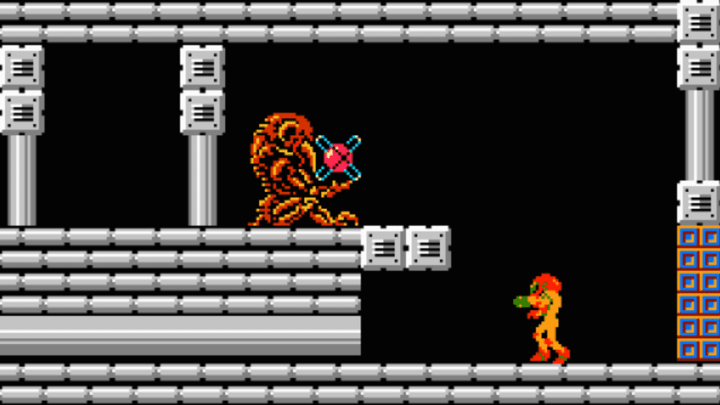Justin Bailey was a programmer. Justin Bailey was an inside joke. Justin Bailey was referencing British slang for "bathing suit."
If you played the Nintendo Entertainment System side-scrolling shooter Metroid in the 1980s, chances are you’ve heard one of these explanations for the game’s most infamous password. Entering "Justin Bailey" and keying in an additional 12 blank spaces allowed players to begin the game with heroine Samus Aran appearing in a leotard instead of her armor while being supplied with a full arsenal of missiles.
Compared to the garbled nonsense of other passcodes, "Justin Bailey" was domesticated. It sounded like a real person got mixed up in the Metroid production at some point. Where did he come from? Was he man or myth? Or was it all just one very weird fluke?
The October 1991 issue of Nintendo Power. RetroMags.com
Though it’s impossible to say when gamers first became aware of the code, evidence points to the fact that it got national attention in the fall of 1991. That’s when Nintendo Power, the company’s in-house magazine, first made mention of the name in a "retro" strategy guide for the 1987 game meant to hype the pending Game Boy release of Metroid II.
Unfortunately, Nintendo Power rarely bothered with bylines. The closest we may ever get to an author’s credit is George Sinfield, who worked as a writer and senior editor for the magazine and tells mental_floss that he "probably" wrote the Metroid guide.
"Samus shows her identity and appears in the revealing suit if you are able to finish the game very quickly," he recalls. "I think it's less than an hour. When you stop playing at any point after that, the game will generate a password that allows you to start again with Samus in that state. The fact that 'Justin Bailey' works as a password at all, let alone one that features a powered-up Samus, is pure coincidence and was not put into the game intentionally."
Metroid was one of two early NES games—the other being Kid Icarus—that used a password system to allow players to return to an advanced point in the game. (They also came in silver boxes to help distinguish them from other releases.) Metroid’s Japanese version was on a disc that allowed information to be saved directly to storage; the U.S. release, programmed by Nintendo’s base of operations in Kyoto, Japan, used a password system that generated random phrases. "Justin Bailey," Sinfield says, is just one of many working codes that happened to make sense to a human.
If the password wasn’t put in intentionally, that means someone happened across it by accident. And since no one is prone to typing in random proper names, it’s possible that an actual Justin Bailey decided to try out his own name as a lark. The latter theory holds up: In order to compose the strategy guide, Sinfield would have referred to in-house information as well as tips sent in by readers.
"I wrote the 'Classified Information' section back then and got tips and tricks from a lot of sources," Sinfield says, "including players who sent us letters. My guess is that someone named Justin Bailey wrote to Nintendo with the code after inputting his own name and getting interesting results."
While not definitive, it may be the best explanation we'll ever get to the mystery of Justin Bailey: a bored player who accidentally became the most famous (and hypothetical) NES gamer of all time.
